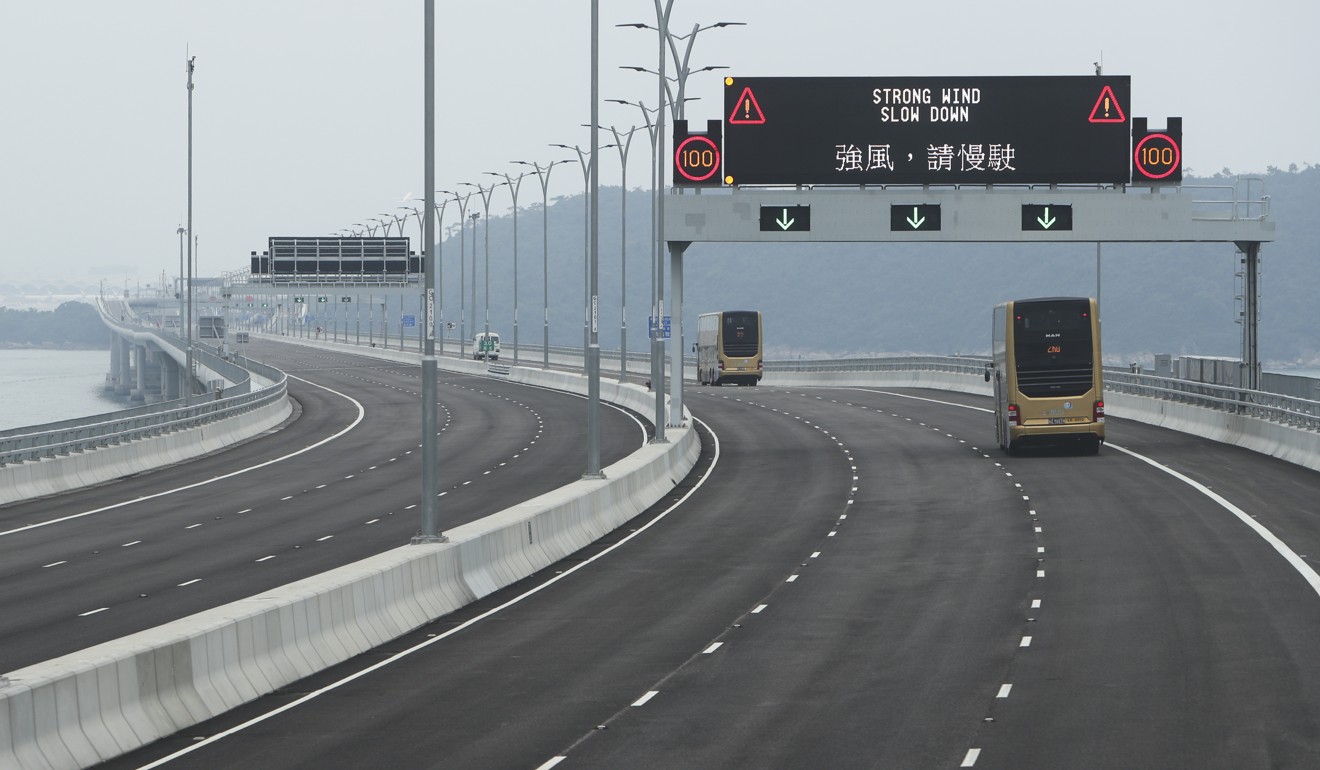
55km Hong Kong-Zhuhai-Macau bridge to open Wednesday, so how can Hongkongers use it?
- Shuttle buses will ply the cross-border route in large numbers day and night
- New bus services to Hong Kong immigration port on bridge will be launched
The world’s longest sea crossing, the 55km Hong Kong-Zhuhai-Macau bridge, is set to open on Wednesday. With most Hongkongers relying on public transport, many residents will be sizing up the options for making use of the mega link.
Buses will ply the route in large numbers, but choices will arise over how to deal with immigration terminals that separate Hong Kong and Macau from mainland China. Hong Kong-based travellers may opt to use local transport to reach the port on the Hong Kong side of the bridge, before switching to a shuttle bus for the cross-border journey, and changing again to local services on the other side.
Alternatively, intercity cross-boundary coach services will connect downtown areas of Hong Kong directly with Zhuhai and Macau, avoiding the need for changes.
Hire car services will also be available to Macau but are only expected to commence operations early next year.
Bus companies in scramble to get ready for opening of mega bridge
Nine existing Hong Kong airport bus routes will be extended so they pass by the bridge port. These are A11, A21, A22, A29, A31, A33X, A35, A36 and A41.

Three new feeder routes, B4, B5 and B6, will run between the port, the airport, Tung Chung and Sunny Bay on Lantau Island.
A green minibus route, 901, will also be available from Tung Chung.
Tour operators, hotels and other contracted providers will run buses from various parts of Hong Kong to the bridge port.
‘Unique and beautiful’ design sets Hong Kong-Zhuhai-Macau bridge apart
However, local vehicles, including taxis, will not be allowed to travel on the bridge past the Hong Kong port.
For making the full journey across the link, licensed shuttle buses will run 24 hours a day, setting off every five minutes at peak hours and every 10 to 15 at other times. Overnight services will leave every 15 to 30 minutes. Each trip will cost HK$65 in the day and HK$70 at night.

Shuttle bus ticket counters and ticket vending machines will be found in the restricted area of the port’s departure hall after passengers have cleared immigration. Online sales are also available.
Cross-border coaches will run from an array of locations, including Causeway Bay, Tsim Sha Tsui, Kwun Tong and Mong Kok, to a variety of mainland destinations such as Zhongshan, Zhuhai, and Jiangmen.
Traffic and bus worries ahead of opening of bridge to mainland China
One Bus Hong Kong Macau will operate a fleet of 19 coaches between Kwun Tong and Macau, while TIL Chinalink will run about 400 cross-border coach trips a day.
Prices will range from HK$120 to more than HK$200.
The bridge will shorten trips from Hong Kong International Airport to Zhuhai from the current four hours to just 45 minutes.

